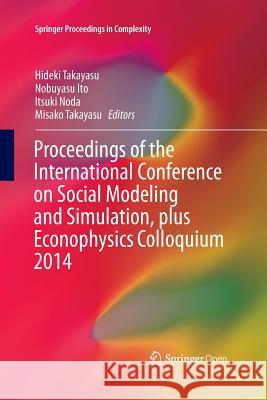Proceedings of the International Conference on Social Modeling and Simulation, Plus Econophysics Colloquium 2014 » książka
topmenu
Proceedings of the International Conference on Social Modeling and Simulation, Plus Econophysics Colloquium 2014
ISBN-13: 9783319372945 / Angielski / Miękka / 2016 / 346 str.
Proceedings of the International Conference on Social Modeling and Simulation, Plus Econophysics Colloquium 2014
ISBN-13: 9783319372945 / Angielski / Miękka / 2016 / 346 str.
cena 201,24
(netto: 191,66 VAT: 5%)
Najniższa cena z 30 dni: 192,74
(netto: 191,66 VAT: 5%)
Najniższa cena z 30 dni: 192,74
Termin realizacji zamówienia:
ok. 22 dni roboczych
Bez gwarancji dostawy przed świętami
ok. 22 dni roboczych
Bez gwarancji dostawy przed świętami
Darmowa dostawa!
Kategorie BISAC:
Wydawca:
Springer
Seria wydawnicza:
Język:
Angielski
ISBN-13:
9783319372945
Rok wydania:
2016
Wydanie:
Softcover Repri
Ilość stron:
346
Waga:
0.50 kg
Wymiary:
23.39 x 15.6 x 1.88
Oprawa:
Miękka
Wolumenów:
01
Dodatkowe informacje:
Wydanie ilustrowane











